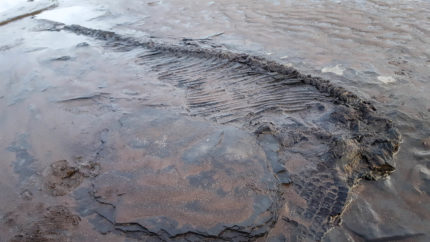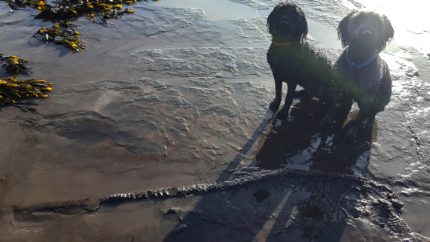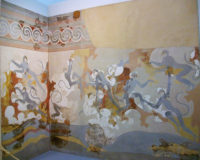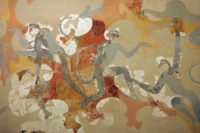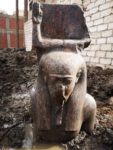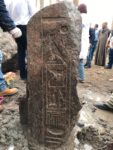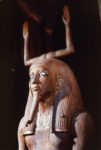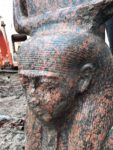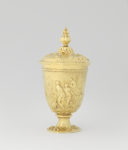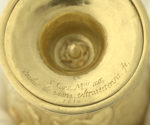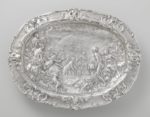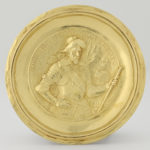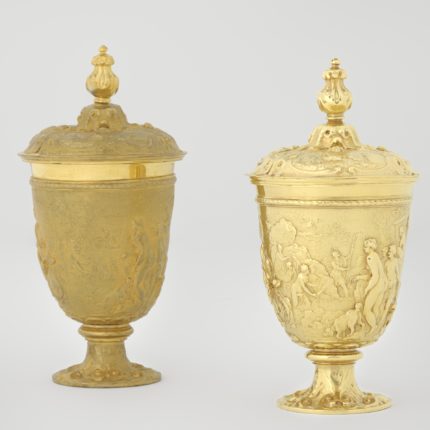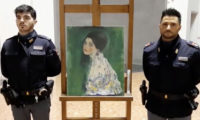 A uniquely important painting by Gustav Klimt that was stolen in 1997 from the Ricci Oddi Gallery of Modern Art in Piacenza has been found in the garden wall of said gallery. On Tuesday, December 10th, maintenance workers discovered a metal door while cleaning ivy off the wall. Behind the door was a niche filled with rocks and metal scraps. Resting on the debris was a black plastic garbage bag. Inside the trash bag was Portrait of a Lady, painted by Gustav Klimt in 1917 and estimated to be worth $66 million.
A uniquely important painting by Gustav Klimt that was stolen in 1997 from the Ricci Oddi Gallery of Modern Art in Piacenza has been found in the garden wall of said gallery. On Tuesday, December 10th, maintenance workers discovered a metal door while cleaning ivy off the wall. Behind the door was a niche filled with rocks and metal scraps. Resting on the debris was a black plastic garbage bag. Inside the trash bag was Portrait of a Lady, painted by Gustav Klimt in 1917 and estimated to be worth $66 million.
Jonathan Papamerenghi, a member of the Piacenza council with responsibility for culture, did not exclude the possibility that the painting had been left in the wall by thieves who wanted to return it.
 “It is very strange, because, immediately after the theft, every single inch of the gallery and garden was checked with a fine-tooth comb,” he told La Repubblica. “The strangest thing is that the painting is in excellent condition. It does not seem like it has been locked under a trapdoor for 22 years.”
“It is very strange, because, immediately after the theft, every single inch of the gallery and garden was checked with a fine-tooth comb,” he told La Repubblica. “The strangest thing is that the painting is in excellent condition. It does not seem like it has been locked under a trapdoor for 22 years.”
It can’t have been. At least not unless the thieves rebagged it, because the company that made the garbage bag only came into existence a decade after the theft.
Portrait of a Lady was a focal point of the Ricci Oddi Gallery before there 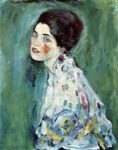 even was a gallery. Collector Giuseppe Ricci Oddi donated his prized collection of artworks to the city in 1924 and construction began on the gallery. Between then and its inauguration in 1931, Oddi continued to buy art, purposely seeking out pieces that would fill blanks in his collection and enhance the artistic value of the new gallery. Klimt’s painting was one of those key purchases.
even was a gallery. Collector Giuseppe Ricci Oddi donated his prized collection of artworks to the city in 1924 and construction began on the gallery. Between then and its inauguration in 1931, Oddi continued to buy art, purposely seeking out pieces that would fill blanks in his collection and enhance the artistic value of the new gallery. Klimt’s painting was one of those key purchases.
Authorities don’t know exactly when the painting was stolen. The theft was discovered the morning of Saturday, February 22nd, but the police think the theft took place three days earlier. How an art gallery could be unaware their greatest masterpiece was missing is a weird, complicated tale that wouldn’t be out of place in a novel.
It begins a year earlier in 1996 when 18-year-old art student, Claudia Maga, noticed that Portrait of a Lady bore distinct similarities to another work by Klimt, Portrait of a Young Lady, missing since 1912. The pose, proportions and even the beauty mark on the cheek were identical. She contacted the gallery’s director and they had the painting X-rayed at the local hospital. It confirmed the accuracy of Maga’s keen eye: the lost portrait was underneath. Apparently Klimt had painted over it out of grief when the model, his lover and muse, died suddenly.
This discovery made the Ricci Oddi Gallery the proud owner of the only known double portrait by Gustav Klimt. They immediately planned a dedicated exhibition at another location in the center of the city while the gallery building itself was undergoing renovations. Paintings were boxed up and put in storage. Doors were unlocked, the security system turned off and a stream of workers went about their business.
On February 22nd, gallery staff realized the Lady was gone, not boxed up, not stored, not moved to a temporary location, but stolen. The only clue was the paintings heavy gilded frame left behind by the thief. It was found on the roof next to a skylight with an opening around the perimeter. Police hypothesized that the frame had been hooked by a fishing line and the painting reeled up and out through the skylight, an outlandishly improbable scenario that proved impossible when the heavy frame was found to be too large to fit through the skylight’s opening.
The investigation took several turns after that A fingerprint was found on the frame. A forgery turned up on April Fool’s Day 1997. Years later an art thief claimed the stolen painting had in fact been stolen months earlier and replaced by a copy and the copy was then stolen to cover up the fact that it was a copy. The stolen original had been sold for bundles of cash and kilos of cocaine. The stolen copy would be returned on the anniversary of the theft. DNA was found on the frame in 2016. All leads fizzled out.
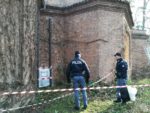 Given the copy of a copy story and the oddness of the garden wall find site, confirming the authenticity of the portrait is of the utmost priority. All indicators are positive however: the wax stamp, gallery stamp and the period labels on the back of the canvas appear to be original.
Given the copy of a copy story and the oddness of the garden wall find site, confirming the authenticity of the portrait is of the utmost priority. All indicators are positive however: the wax stamp, gallery stamp and the period labels on the back of the canvas appear to be original.
The Ricci Oddi has been inundated with requests for more information since the news broke. They haven’t been able to disclose much of anything while the painting is still being officially authenticated and the police investigation is ongoing. To quench the public thirst, they have set up a page on their website that they will update with news as it becomes available.
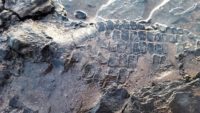 Gopsill is a paleontology fan and has found several fossils before, but they were mainly ammonites, not a large Mesozoic marine reptile. He has reported Poppy and Sam’s find to Somerset Heritage and sent photographs to the Natural History Museum in London.
Gopsill is a paleontology fan and has found several fossils before, but they were mainly ammonites, not a large Mesozoic marine reptile. He has reported Poppy and Sam’s find to Somerset Heritage and sent photographs to the Natural History Museum in London.